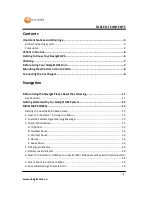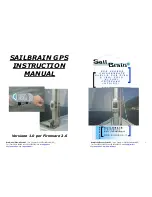
GPS in Schools – Worksheet 2
Produced by the University of Tasmania in conjunction with Geoscience Australia as part of the AuScope GPS in Schools Project – 2014.
6
16.
Congratulations, you’ve just made your first interactive map! You can click on each of the waypoints to bring
up a detailed description of each feature. Be sure to save your edited waypoints by selecting each one in
the navigation pane and choosing ‘File
Save
Save Place As…’.
17.
Google Earth can be used to make interactive maps of many different things, including the locations of
natural features, distribution of natural disasters or plotting aircraft movements over the globe. The Google
Maps Gallery has a range of advanced interactive maps that are free for the public to explore. Open one
of the following four maps in Google Earth by navigating to the URL and choosing ‘View in Google Earth’.
Download and open the resulting KML file, then describe in detail what the map is showing. Be sure to note
any clustering or other patterns in the data and explain why this is the case. Make sure you record the map
author, publication date, data sources and types of information displayed.
Significant US Earthquakes -
Major Surface Water Sampling Sites -
Global Record Low Temperatures -





































